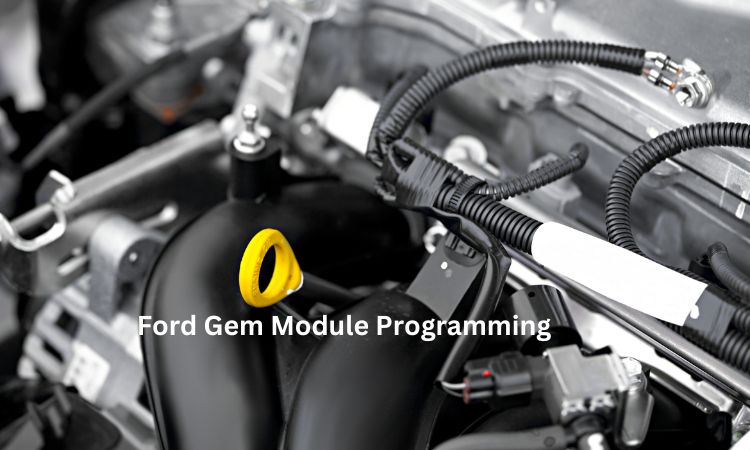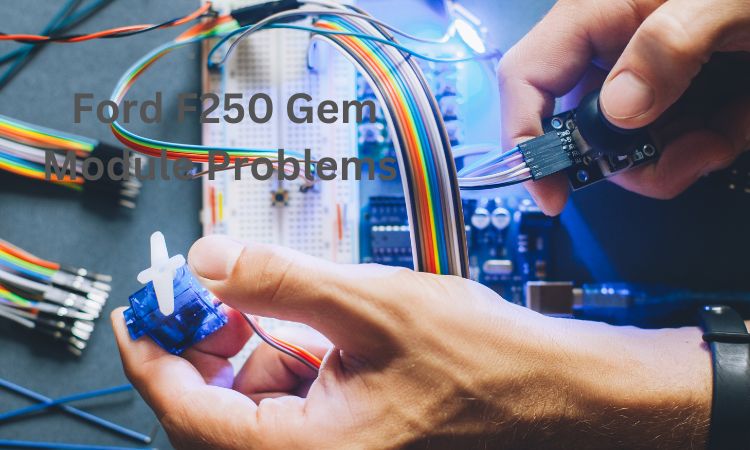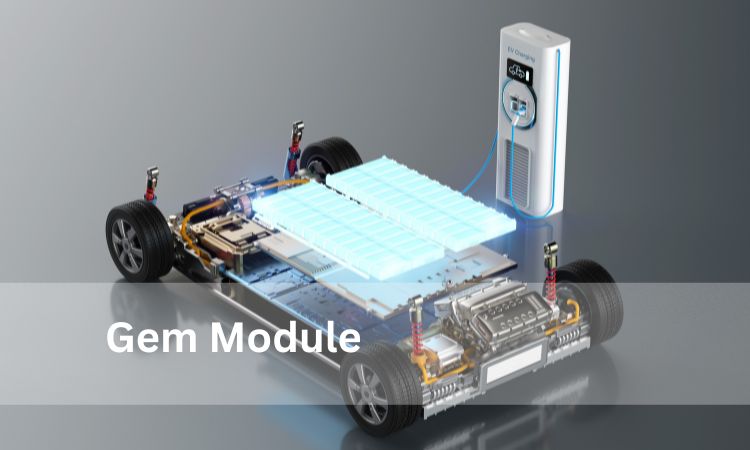Gem Module: How to Test Gem Module
In order to test a gem module, you need to have a few things installed and set up on your system. First, you need Ruby installed. You also need the gem command line tool, which is used to install and manage gems.
Finally, you’ll need a text editor such as vim or Emacs. Once you have these things set up, you can follow these steps to test your gem module.
- Create a test file in the test/ directory of your project 2
- Add the following lines to the top of your test file: 3
- require ‘test/unit’ 4
- require_relative ‘
- /lib/gem_module’ 5
- class TestGemModule < Test::Unit::TestCase 6
- def test_something 7
- assert true 8 end 9 end
How to test GEM module in Ford Focus MK1 (car diagnostics)
What Does a Gem Module Control?
In Ruby, a gem is a unit of reusable code that is used to extend the functionality of Ruby applications. A gem module is a collection of classes and modules that are bundled together to provide a specific set of functionality. Gem modules can be used to add new features to an existing application, or to create standalone libraries that can be reused in other applications.
Gems are typically distributed as RubyGems, which are packaged files that contain the source code for the gem, along with metadata about the gem. When you install a RubyGem, the command-line tool will automatically download and install the gem and any dependencies it requires. You can use the required statement in your Ruby code to load a specific gem module.
For example, if you wanted to use the ActiveRecord gem to access a database from your Ruby application, you would use the following statement:
What Does the Gem Module Control on a 2002 F150?
The GEM module on a 2002 f150 controls the operation of the interior and exterior lights, as well as the instrument cluster. It also houses the fuse for the cigarette lighter and powerpoint.
Read Also: Battery Management System
How Do You Remove Gem Modules from a 1997 Ford F150?
If you need to remove a GEM module from your 1997 Ford F-150, the process is actually pretty simple. First, locate the module. It should be located on the driver’s side of the dash, near the fuse box.
Once you’ve found it, disconnect the negative battery cable. This will help prevent any electrical damage while you’re working on the truck.
Next, remove the two screws that hold the GEM module in place.
Be careful not to lose these screws, as they are necessary for re-installation. With the screws removed, gently pull the GEM module out of its housing. You may need to wiggle it a bit to get it loose, but be careful not to break any of the connections.
Once you have successfully removed the GEM module, you can begin reinstalling it or installing a new one. Simply reverse the removal process and make sure all connections are secure before reconnecting the negative battery cable.
What is Ford Gateway Module?
A Ford gateway module is a device that allows communication between a vehicle’s electronic control unit (ECU) and its peripheral devices. Gateway modules are used in vehicles that have multiple ECUs, such as those with dual-clutch transmissions or all-wheel drive. They allow the ECUs to share data and coordinate their activities.
Gateway modules typically contain a microprocessor, memory, and various interfaces that enable them to connect to the ECUs and peripheral devices. The microprocessor executes instructions that manage the flow of data between the ECUs and devices. The memory stores data that is needed by the microprocessor or that needs to be shared between the ECUs.
The interfaces provide physical connections between the gateway module and the ECUs or devices. The role of a gateway module can be summarized as follows: – It enables the communication between multiple ECUs in a vehicle.
– It coordinates the activities of the various ECUs. – It stores data for use by the microprocessor or for sharing between multiple ECUs.

Credit: www.automasterx.com
How to Diagnose a Bad Gem Module
If your car starts making a strange noise, the first thing you should do is figure out where it’s coming from. Is it the engine? The exhaust?
The transmission?
If you have a gem module in your vehicle, and it’s starting to act up, there are a few things you can do to diagnose the problem. First, check all of the connections to make sure they’re tight and free of corrosion.
Next, take a look at the fuse box to see if any of the fuses are blown. If everything looks good there, then it’s time to test the gem module itself.
There are a few different ways to test a gem module, but one of the easiest is with a multimeter.
Just set the multimeter to measure resistance, and touch one lead to each of the terminals on the gem module. If there’s no continuity between those terminals, then you’ve got yourself a bad gem module!
Ford Gem Module Reset
If your Ford vehicle equipped with a Gem module starts acting up, you may be able to reset the module to clear any errors. Here’s how: 1. Disconnect the negative battery cable.
2. Remove the Gem module from its mount.
3. Inspect the Gem module for any physical damage. If there is any damage, replace the module with a new one. Otherwise, proceed to step 4.
4. Using a small flat-blade screwdriver, gently pry off the plastic cover from the top of the Gem module (the cover is held on by two small tabs).
5. Locate the small black reset button on the circuit board inside the Gem module (see image below).
6. Use a pen or paperclip to press and hold down the reset button for 5 seconds, then release it.
Bad Gem Module Symptoms
If you’re a Ruby on Rails developer, you may have come across the “bad gem” error message. This error can be caused by a number of things, but most often it is caused by an issue with the Gemfile.lock file. The Gemfile. lock file is used to keep track of which versions of gems are installed in your application.
When you run bundle install, this file is updated with the new gem versions that are installed. If there are any discrepancies between this file and the actual gems installed in your application, you will see the “bad gem” error message. There are a few ways to fix this issue:
1) Run the bundle install again. This will update your Gemfile. lock file with the correct gem versions that are installed in your application.
2) Delete your Gemfile. lock file and run bundle install again. This will regenerate a new Gemfile.lock file with the correct gem versions that are installed in your application.
Ford Gem Module Programming

When it comes to programming a new or replacement Ford Gem Module, there are a few things that you’ll need to keep in mind. First, you’ll need to have the module programmed by a qualified technician using the proper equipment. Secondly, you’ll need to make sure that the module is compatible with your car’s specific make and model.
Lastly, you’ll want to be sure to have the module installed by a professional who has experience with this type of work.
If you’re looking for a qualified technician to program your new or replacement Ford Gem Module, we highly recommend taking it to our team of experts here at CarTechnicianz. We have the proper tools and equipment needed to properly program your module, and our team has extensive experience working with all makes and models of vehicles.
Plus, we offer competitive rates on all of our services.
Once your Ford Gem Module has been programmed, it will need to be installed into your car. Again, we recommend having this done by a professional who has experience with this type of work.
Our team at CarTechnicianz can handle both the programming and installation of your new module quickly and efficiently so that you can get back on the road as soon as possible.
7.3 Bad Gem Module Symptoms
If you’re a Ruby programmer, you’ve probably encountered the following error message at some point: “require’: cannot load such file — xxx (LoadError)”. This is generally caused by one of two things: either the file you’re trying to require doesn’t exist, or the file exists but its containing directory isn’t on Ruby’s $LOAD_PATH. In this article, we’ll take a look at how to debug these kinds of errors.
First, let’s talk about the $LOAD_PATH. This is an array of strings that specifies the directories that Ruby will search when looking for files to require. By default, it includes your current directory (represented by a period), as well as any directories specified in the RUBYLIB environment variable.
You can view your current $LOAD_PATH by running puts $. If you’re getting a LoadError because the file you’re trying to require doesn’t exist, the most likely culprit is that it’s not in one of the directories on your $LOAD_PATH. For example, if you have a file called myscript.rb in your current directory and try to require ‘myscript’, Ruby will look for it first in your current directory (since ‘.’ is always included in $LOAD_PATH).
If it can’t find it there, it will give up and raise a LoadError. On the other hand, if you try to require ‘some/other/file’, Ruby will look for that file relative to each directory in $LOAD_PATH until it finds it or raises a LoadError. So if myscript was actually located at ‘/usr/local/lib/myscript.rb’, you would need to add ‘/usr/local/lib’ to your $LOAD_PATH before requiring ‘myscript’ would work successfully.
Ford Gem Module Problems
If you own a Ford vehicle, you may have heard of the term “Gem Module.” So what is a Gem Module and what does it do? Put simply, the Gem Module is responsible for controlling all the lights on your Ford’s dashboard.
over time, however, these modules can experience problems that can cause your dashboard lights to malfunction.
One common problem that affects Gem Modules is moisture buildup. This can happen if your vehicle’s sealant begins to degrade, allowing water to seep in and damage the module.
In some cases, this moisture buildup can cause corrosion that will eventually lead to complete failure of the module.
Another problem that can occur is known as “clock spring failure.” The clock spring is a coiled wire located inside the module that helps keep track of the position of the steering wheel.
Over time, this wire can break or become damaged, causing your dashboard lights to stop working correctly.
If you’re experiencing any problems with your Ford’s dashboard lights, it’s important to take action immediately. In many cases, these problems can be resolved by replacing the Gem Module entirely.
However, if you wait too long, more serious issues could arise that could result in an even more expensive repair bill.
Ford F250 Gem Module Problems

Gem modules are the brains behind the electrical systems in many Ford vehicles. The module controls everything from the headlights to the door locks and can cause a host of problems if it fails. Here’s what you need to know about Ford F250 gem module problems.
What is a Gem Module?
A gem module is a computer that controls the electrical functions in a Ford vehicle. It’s located in the dash and communicates with other parts of the car via data bus wires.
When something goes wrong with the gem module, it can cause all sorts of problems.
Symptoms of a Bad Gem Module
There are several symptoms that can indicate a problem with the gem module in your Ford F250:
-The headlights or taillights may stop working
-The doors may lock or unlock on their own
-Windows may roll up or down without anyone touching them
-The radio may turn on or off by itself
-Interior lights may flicker or come on and stay on when they shouldn’t
These are just some of the potential symptoms – if you notice anything strange going on with your truck, it’s worth getting it checked out to see if the gem module is to blame.
Gem Module Repair
If your jewelry has lost a gem, it’s not the end of the world. Most jewelers offer repair services, and many will even do it while you wait. The cost of repairs will vary depending on the jeweler and the severity of the damage, but it’s usually fairly reasonable.
The most important thing to keep in mind when getting your jewelry repaired is to make sure that the person doing the repairs is qualified and experienced. There are a lot of “fake” jewelers out there who will take your money and do a subpar job, so it’s important to find someone who you can trust.
Once you’ve found a qualified jeweler, they will assess the damage and give you an estimate for repairs.
If everything looks good, they’ll get to work fixing your jewelry. In most cases, gem module repair is fairly straightforward and doesn’t take too long.
So if your favorite piece of jewelry has lost a gem, don’t despair!
Just take it to a qualified jeweler and they should be able to have it looking as good as new in no time.
Conclusion
If you want to test a gem module, you can use the following steps: 1. Install the gem module. 2. Create a file named test_gem_module.rb in your project’s root directory.
3. Add the following code to test_gem_module.rb: require ‘test/unit’ require ‘rubygems’ require ‘shoulda’ class TestGemModule < Test::Unit::TestCase def test_truth assert true end 4. Run the tests with ruby test_gem_module.rb.


